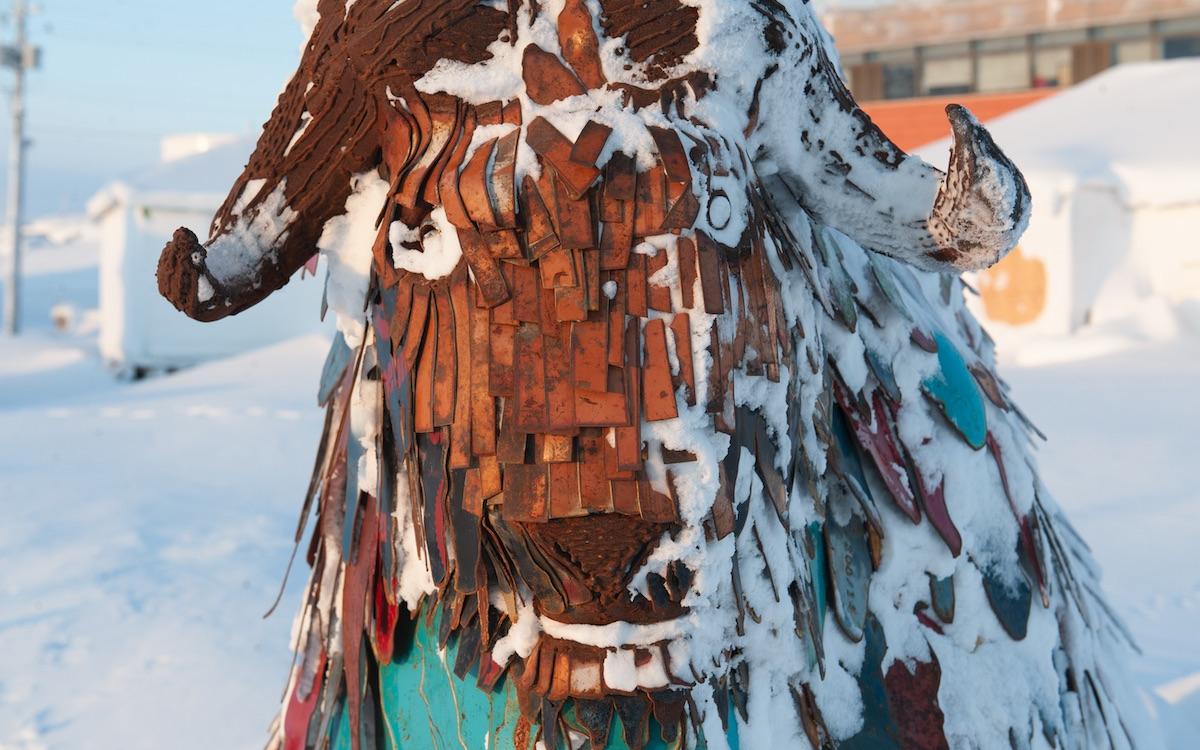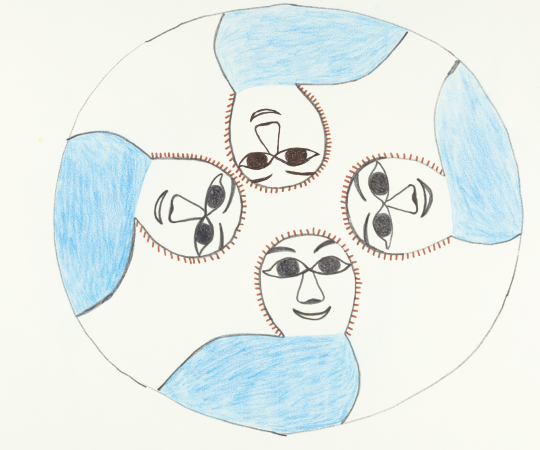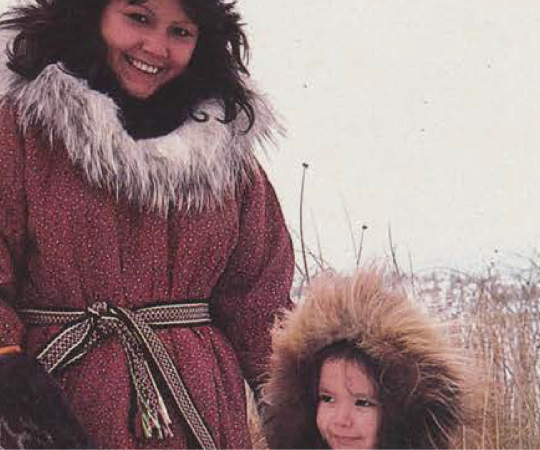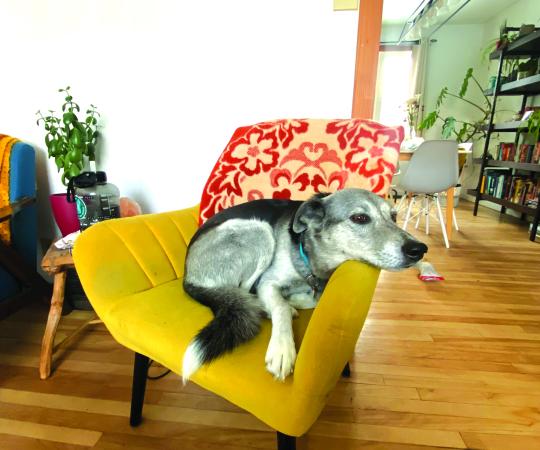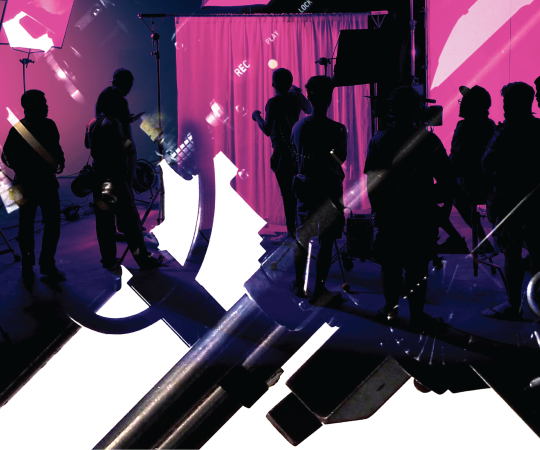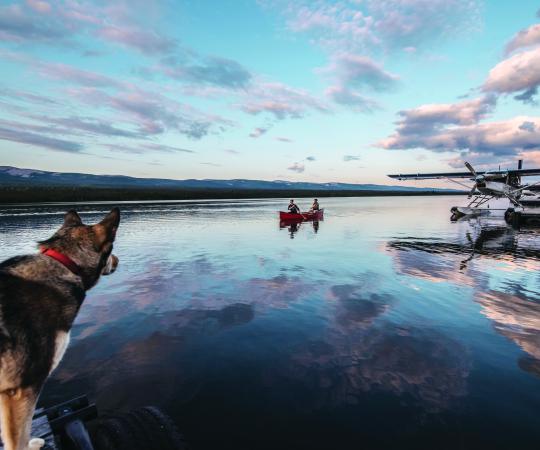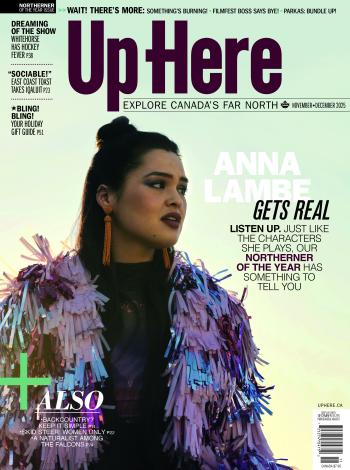It started four years ago when a volunteer stumbled across a nest with four baby birds at Yellowknife’s Folk on the Rocks site. It was in the lead-up to that year’s music festival, and the nest was tucked into some shrubs right at main-stage. The perfect view if mama bird wanted to catch some music, but not so good for her babies.
“So I took two pallets which were just lying around at the Folk site, and I put them together in sort of an L shape and stood them up so that it protected the nest,” says Keith MacNeill. He’s gone by many titles over his 15 years with the festival, from volunteer and board member to artistic director and site manager. But after his quick pallet construction, he can add bird saviour to his CV. “Now, I don’t know if it was actually successful in protecting the baby birds because, in a couple of days, they were gone. But I did put those L-shaped pallets together and it’s still standing today.”
Those pallets stayed up, and over the years they have accumulated several layers of paint and decoration, turning them into an everyday piece of public art that most people hardly notice when they pass it by. The North is dotted with public art—small like MacNeill’s pallets or large, splashed across dumpsters, building walls, and the sides of rock. Art like:

INUVIK'S ANTENNAS
They’re one of the first things you see when you arrive in Inuvik, by road or by air. Five giant satellite antennas, 13 metres across. Part of the Inuvik Satellite Station Facility, the antennas function as critical infrastructure for Canada and several other countries, collecting data that helps with disaster relief, downlink earth observation, ship detection, and more. And now, they’re just really, really pretty.
“We think it’s the largest art installation in Canada’s North anyway, in one little area,” says Jiri Raska, station manager. Over the last two summers, the antennas have been covered in art representing different people from the area by local artists. Sheree McLeod, an Inuvialuit artist, depicted a blanket toss on one, inspired by her great-uncle Abel Tingmiak, a well-known blanket toss jumper in the community. The Gwich’in Tribal Council chose Ronnie Simon, a wildlife painter, to create a winter scene depicting traditional activities like hunting, trapping and fishing, as well as caribou. Ron English represented the Metis with images of a fiddle, dog sledding, and the traditional sash, wrapped around the infinity symbol representing the meeting of two cultures. Anick Jenks depicted modern Inuvik, with 24-hour sunlight bouncing off “smartie” houses while ravens fly overhead. And students from the East Three high school art club tackled the geodesic ‘radome’ building with wildlife and cultural symbols representing each community in the NWT.
“Large white antennas are so ominous. Nobody knows what they’re doing, very few people ask. It’s not engaging enough. So it’s completely changed things around,” says Raska. “We want to engage the public in science, tech, engineering, and math. We go out to the school, the school’s been out to the site many times, but there’s no ownership on the community level. And that’s kind of what we wanted to change.”
The art isn’t painted directly on the antennas, instead, each piece was rendered onto high-quality auto decals and applied in sections like giant stickers. In all, Raska estimates it took about eight to 12 hours per antenna, but that was broken up into chunks of 20 to 90 minutes when workers could scurry up the antenna and back down before it had to move again. “We can’t stop the antennas, they’re fully functioning. They twist and turn, they spin around, they track satellites that are passing overhead at like 26,000 kilometres an hour, so a little bit tricky!”
It was worth it, however.
“The Inuvik Satellite Station Facility is an international hub of sorts. It hosts the Swedish, the French, the German, the Japanese space agencies there, and the European space agency and other clientele that use the facility,” he says, adding that with the mix of artists and representation, the five satellite dishes together have “the iconic Inuvik flavour.” –JDQ

Cambridge Bay's Muskox
It’s made of old exhaust pipes, the side of a sea can, and a bunch of used oil drums salvaged from a metal dump. But the Cambridge Bay muskox is anything but garbage. The life-size art installment has graced the shoreline of the western Nunavut community in a new heritage park since 2017 (for a Canada 150 reveal). That’s after two B.C. artists began working with the municipal hamlet on a youth mentorship project, From Scrap to Art, teaching practical skills and building confidence among young men.
This colourful beast, a set of wolves, and a series of smaller animals like fish, ravens, and ptarmigan are the product of that project that saw young men ages 13 to 19 learn to weld art, using scraps from the community metal dump. The artist mentors, Kerry and Amanda Illerbrun of Kastawayz Art, have been welding art from recycled metal for over 20 years.
For them, the Cambridge metal dump was a treasure trove. For around a dozen youth, the dump became a way to make a difference in their community. The scrap art project all happened out of borrowed space, using borrowed tools. Last year, From Scrap to Art won $100,000 through the Arctic Inspiration Prize to see a workshop built in the heritage park, tools purchased, and more youth mentored. Some of their pieces are placed around town with Inuit language words also welded from scrap metal, as a language learning project. They built two huge kakivat (traditional fishing spears) that will frame a welcome sign for the community.
The muskox, while brown in real life, is fashioned using brightly coloured metals in tribute to the tundra. “We wanted it to be full of colour to represent the seasons, and the colours you find on the landscape,” says Amanda Illerbrun. “There are a lot of subtle variations in the landscape that you don’t see at first glance.”
That’s the colours of lichen on rocks, of rusty tones, of spring flowers and winter ice. The muskox’s realistic build and stance are thanks to advice from community member and hunter Attima Hadlari, who worked with his wife Elisabeth to mentor the youth along with the visiting artists. One of the wolves, named Fred, isn’t too lifelike, but looks more like a robot. “He looks a bit gnarly and mean, mechanical,” says Illerbrun. Fred was built to represent a “challenging wolf” and is set up in a staredown with the muskox. –BB

Whitehorse's copper birds
Northerners are no strangers to animal migration, especially when it comes to birds. In an installation at the Whitehorse Canada Games Centre, artist Joyce Majiski brings this out in her series of large copper birds that soar the length of a 100-foot by 25-foot open ceiling space.
“There’s a call to action with migration, you want to move,” she says. “Fall is coming, you’ve got to cut your wood, you’ve got to pick your berries. It’s this action time. Winter is coming and you’ve got to be prepared.”
Birds, because they come and go, signal a change in season, she says, through migration. “They symbolize a lot for people living in the North.” Majiski envisioned the work, titled Winging North, for a commission by the City of Whitehorse to build a piece in the community multiplex, after it was renovated and rechristened the Canada Games Centre, to host the 2007 games. She began building the labour-intensive artwork in 2004 and installing it in the fall of the following year. The birds, 30 of them at eight–by–three feet each, are etched with images of, and words to do with birds.
“My roots are in printmaking, so to me they were just large copper plates,” she says. The copper birds are hand-hammered into soaring shapes, and their wings were rounded using huge sandbags. They weigh about 10 lbs each, and are strung using heavy framing wire. As a biologist and former wildlife guide, Majiski’s work is environmental- based, inspired by the North and its wild spaces.
“I wanted people to get the sense that the birds had come in, taken a visit, and then left again. You get that when you walk along them.” You can see the birds looking up from the bottom floor, or walk by them on the second storey. “There’s always some sort of perimeter with public art, whether it’s either financial or it’s space-wise or it’s inside or outside or they have a specific theme,” says Majiski, who also has installations at the city library and the Shipyards Park. “As the artist, you have to go in and make a piece that will fit the space.”
Besides enriching a community, Majiski says that public art gives regional artists the chance to birth a piece that may not be possible within the confines of daily artistry. “I like the idea of creating a space that people can explore in and wander through and have an experience in. And those sorts of pieces add to the cultural fabric of a place,” she says. “People like to be in places that are interesting and innovative and create a sense of beauty or a sense of peace or of provoking thought. Public art can do all of those things, it can bring people together in a different way.”–BB

